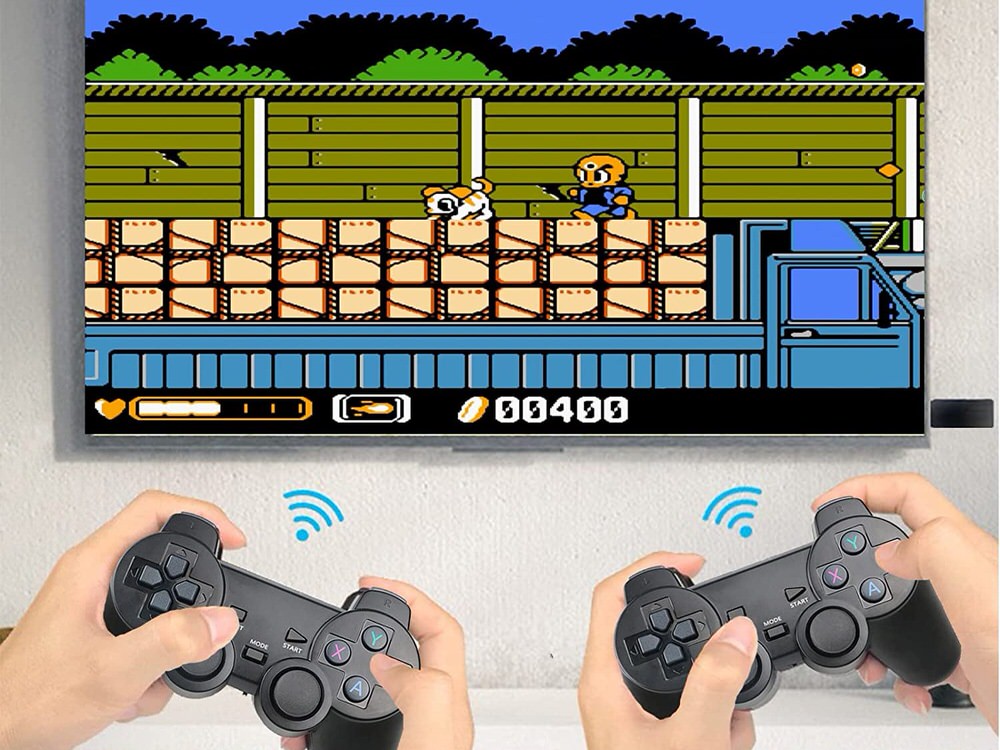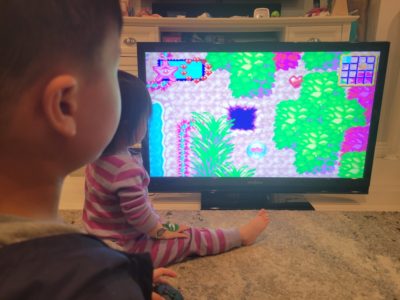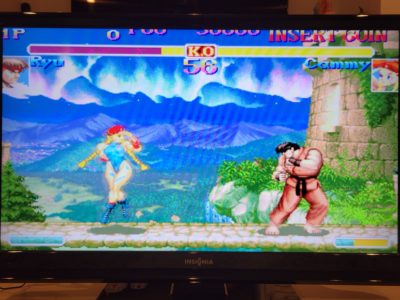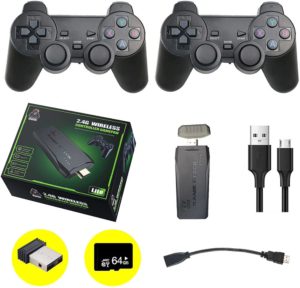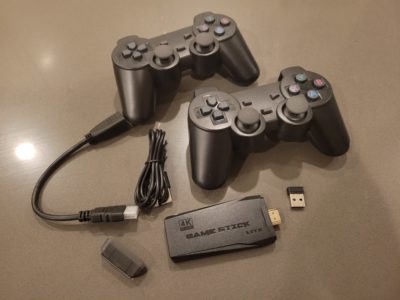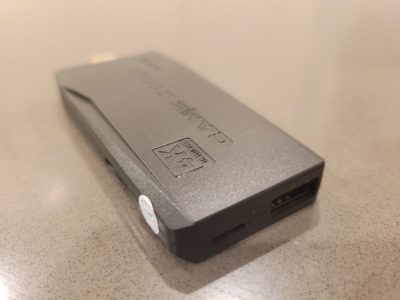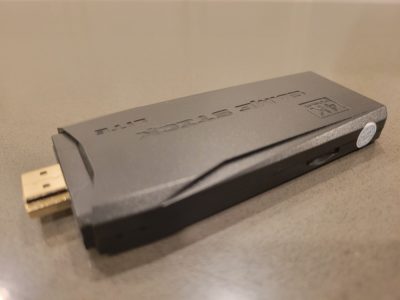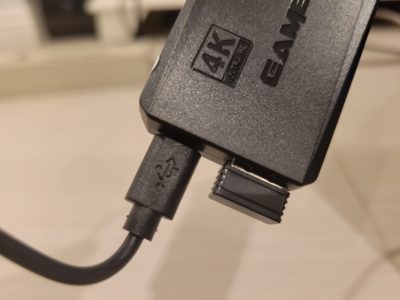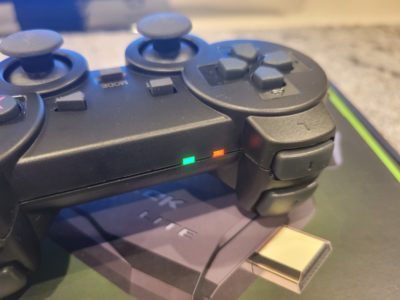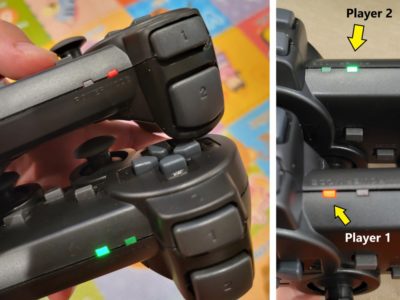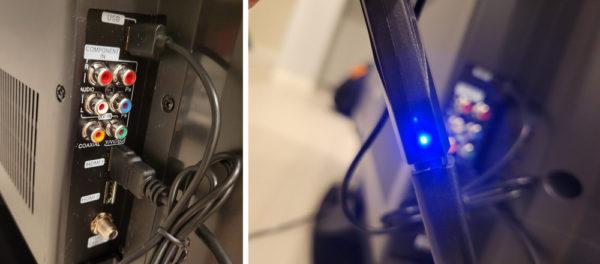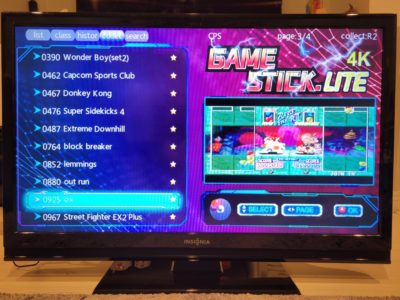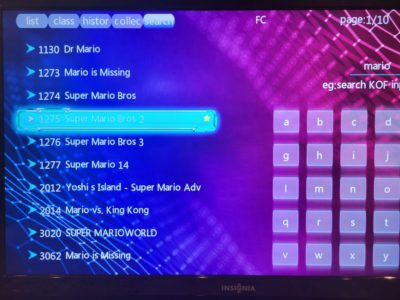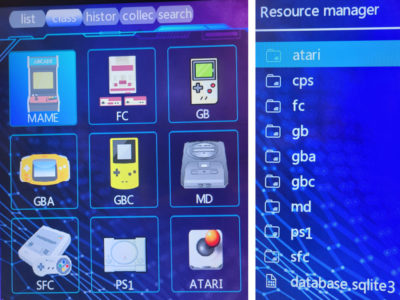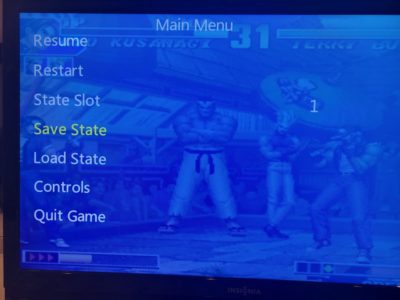Anyando 4K Wireless Game Console Emulator Stick (HDMI)
Pros
- HDMI Interface
- 2.4 GHz wireless controllers
- Large selection of games
- Removable microSD memory card
- Decent navigation interface
Cons
- Most likely illegal
- Audio stuttering on some games
- Frustrating game selection from HUGE list
- Game controllers not the best
- Top/Bottom of screen cropped for most games
Contents
Retro Gaming On-The-Go
The ability to play 10,208 games of various, old consoles from a small HDMI stick by Anyando is astounding. We are talking about games for:
- Atari / Capcom Play System (CPS) / Super Nintendo (FC)
- Gameboy / Gameboy Advance / Gameboy Color
- Sega Genesis (MD) / PlayStation (PS1) / Super Famicom (SFC)
This was made possible through the inclusion of “Game ROMs” that the manufacturer placed onto the removable 64GB microSD memory card. The premise was simple: plug in the game stick into any TV’s HDMI port and play! This even worked on a Toyota Sienna minivan’s rear entertainment system! The key here is the connection interface: HDMI. Other emulators I had played with in the past connected via the Red/White/Yellow RCA (composite) cables — whose ports some newer TVs no longer offer.
Before we get into my review of the Anyando Wireless HDMI Game Console Stick, let us go over what Game ROMs are.
For a higher-end emulator, check out our favorite, Android-based Retroid Pocket 3 Plus. It is not entirely user friendly, but very powerful.
What Are Game ROMs?
ROM stands for Read-Only Memory. Console games were shipped onto memory cards that could not be modified (“read-only”), but enthusiasts had found ways to copy them as “ROM images” as a way to preserve game history or for piracy. Whether that is illegal is a point of contention in the gaming and software industry, but at the time of writing this article, I was not able to find any definite answer since no US court had yet made a ruling.
Emulators are software that mimic the game console with which the ROM image can be played. Since most do not contain any proprietary code, they almost certainly are lawful. Where the legal gray area exists are the ROMs themselves.
Disclaimer: I am not an attorney. Any information shared here is general in nature and not to be taken as personal, professional, or legal advice.
If you own the game, downloading a copy is not illegal. “Fair Use” gives you that right, though copyright holders often claim otherwise. Sharing ROMs, however, is against the law. Even the mere act of downloading a game via a peer-to-peer network (such as Torrent) could be considered “sharing” and thus illegal. However, if a game was no longer available for purchase, downloading a ROM image would not cause market harm, right? Especially if you previously owned a copy and the game cartridge had become damaged. That is where the gray area exists: no court had yet made any ruling on this matter.
United States law states:
“Under section 117, you or someone you authorize may make a copy of an original computer program if the new copy is being made for archival (i.e., backup) purposes only; you are the legal owner of the copy; and any copy made for archival purposes is either destroyed, or transferred with the original copy, once the original copy is sold, given away, or otherwise transferred.” (U.S. Copyright Office)
With that said, there are plenty of Internet sites that allow you to download ROM images for the games you legally already own. A search for “Game ROMs” resulted in dozens of sites, including ROMsGames.net, though most lawyers would likely agree that they are committing copyright infringement.
Anyando HDMI Game Stick
Let us take a look at the Anyando hardware emulator. I previously mentioned how astounding it was to find over 10,000 games on a small HDMI stick with which you could play old titles on a television. All ROM images were stored in a specific folder structure on the included 64gb microSD card. That meant you could (in theory) add/remove ROMs as you wished, though such act probably is not legal if you did not also already own a copy of those games. I plugged the microSD card into a card reader on both Windows and Android, but neither operating system could read it. So, the theory of adding/removing games went out the door. That also meant that I could not grab the list of included games to share with you. Bummer.
Note: The Anyando game stick likely is committing copyright infringement. Purchase or use one at your own risk.
Once you plugged the Anyando emulator into a HDMI interface, a USB source was required to supply power with the included microUSB cable. This may be found at the back of the TV, a phone adapter, or a portable battery. I had found the emulator working on every test television and with a Toyota Sienna 2021 minivan’s rear entertainment system. A blue light on the side of the stick indicated that it was powered on.
Next, I had plugged the USB dongle into the stick so the two included, wireless game controllers (2 AAA batteries each) could be paired via the 2.4 GHz radio frequency. This meant that direct line-of-sight was not required for controllers and console to communicate with one another. A red light (left) on the controller was Player 1, and Green light (right) was Player 2.
Navigating the console emulator was one of the more straight-forward ones. There were 5 tabs:
- List of games
- Games by console “class“
- History of games that had been launched
- Collection of games that were bookmarked via the Controllers’ bottom R2 button
- Search
Push the controller’s top L1/R1 buttons to jump between tabs. You could save/load game states (made possible with the removable microSD card) and restart/exit titles via the controllers themselves — a nice feature since most emulators I had tried required one to physically reboot from the console itself.
Most of the games played well, though some of the newer ones had some audio distortion due to, presumably, an underpowered CPU chip. Perhaps the company will produce higher-powered game sticks in the future for the games to run more smoothly. Some games did run into a variety of errors, including not being able to play with a second player, and most had their top and bottom screen cropped despite changing the TV’s viewing modes.
There are some limitations to be aware of with ROM emulators in general:
- All games will look pixelated, especially on today’s 4K televisions
- The Anyando, however, looked pretty good since it connected directly via the HDMI interface
- Game selection could be maddening even with the Search feature
- Game list was just HUGE to navigate through!
- Large number of duplicate games: different region versions (ie. US, JP, EU) and/or different systems (ie. Gameboy, Gameboy Advance, PlayStation)
- Bookmark (“Collection”) feature helped a bit
From an emulator perspective, one could only wish for the navigation interface to be improved upon in future iterations, including:
- Listing the game console type next to each game
- Ability to hide or delete games right from the interface itself (with a parental pin, of course, to prevent kids from accidentally wiping them out)
Final Thoughts
Legality of the Anyando game emulator aside, from an educational perspective, it was an impressive piece of hardware to test. It was one of the more advanced ones I had tried, and the ability to connect it directly to an available HDMI television port brought so many conveniences and benefits for portable gaming. It enabled fans to play titles again that no longer are available for purchase, or to bring back to life games one had purchased decades ago.
For a higher-end emulator, check out our favorite, Android-based Retroid Pocket 3 Plus. It is not entirely user friendly, but very powerful.

